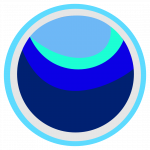The Five Elements Of Feng Shui

The elements of Feng Shui in design
Feng Shui is an ancient and highly appreciated Chinese practice that teaches us to positively align homes, workplaces and spaces in general with the energies that emanate from the natural world around us.
This ancient practice is described in a completely allegorical way, so that people have easier access to the method, with easily recognizable analogies.
Where the symbols come from
The elements are symbols and not the elements of nature themselves, as Feng Shui does not have the function of establishing definitions of the physical world, but rather the significance of these in the energetic plane.
The symbols of Feng Shui are different phases of energy that must be understood and memorized to avoid confusion. The Chinese masters have called them: water, wood, fire, earth, and metal.
There are many schools of thought within this ancient practice – and many dissimilar schools among themselves. Still, when it comes to Feng Shui, there are certain elements that are considered essential to achieving a harmonious, balanced and reliable design.

Feng Shui and Yin-Yang
Born out of chaos, according to Chinese mythology, the concept of yin-yang and the idea of complementary forces were popularized by the work of the Yinyang School, which studied Chinese cosmology and philosophy.
In the 3rd century BC, the famous cosmologist Zou Yan (or Tsou Yen) believed that life went through five phases (wuxing) that continuously interchanged according to the sacred principle of yin and yang.
The most important elements of Feng Shui are these five and are directly related to the concept of yin and yang.
They are presented in pairs, much like the moon and the sun, the feminine and the masculine, the dark and the bright, the cold and the hot, the passive and the active, etc. However, keep in mind that yin and yang are not static or mutually exclusive terms.
Although the world is composed of many different, sometimes opposing forces, they can coexist and even complement each other.

Water
Water is one of the most important elements in Feng Shui, as it represents wealth and prosperity. It is the maximum Yin, the winter, the night. It is said that water can nourish and refresh us, and that by placing a water element in our home or office you can attract positive energy and good fortune. Water features such as fountains, aquariums and fish tanks are said to be especially beneficial, as they not only add a calming and relaxing element to a space, but also help to ionize the air. Water in the cycle of elements nourishes Wood and extinguishes Fire.

Earth
Representing stability, rootedness and support, the earth element is associated with the changes of season and the north-east and south-west directions. In Feng Shui, we say that by incorporating earth elements into our design, we can create a space that is safe, supportive and rooted. Earth as an element, which includes rocks, crystals and ceramics, are said to be especially effective in promoting these qualities. Earth creates Metal and dams Water.

Fire
Fire is conceived as passion, enthusiasm and creativity. It is the maximum Yang, the summer, the noon. If we want to create a vibrant, exciting and lively space, we can incorporate fire elements. Fire elements, such as candles, lamps and red accents, are good examples of fire elements in design. Fire makes Earth and melts Metal.

Metal
The metal element refers to clarity, focus and precision. By incorporating metal in our design, we can create a clean, crisp and orderly space. It is associated with autumn, evening, Yin. Metallic elements such as wind chimes, precious stones, the sound of the piano or a pendulum clock are particularly effective. Metal holds Water and cuts Wood.

Wood
The wood element represents growth, new beginnings and fertility. In Feng Shui, it is known that by incorporating wood into our design, we can create a space that is flourishing, productive and full of potential. Wooden elements, such as plants, bamboo and wooden furniture, are used to promote these qualities. Wood is associated with spring, morning, Yang. Wood feeds Fire and consumes Earth.
